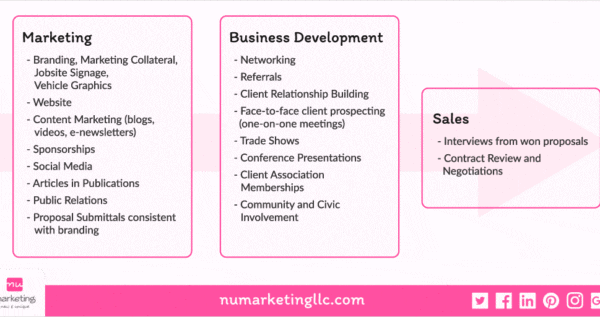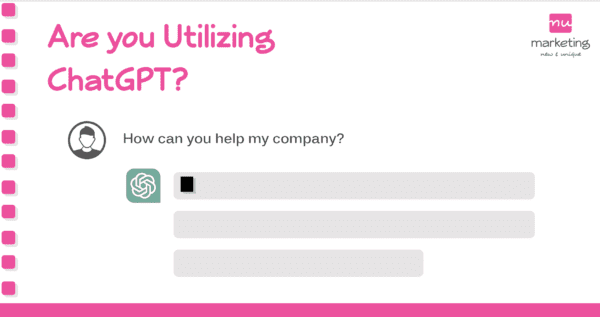
Firms should use on-call proposals as a strategic marketing and business development tool to get in front of new clients. While they’re often seen as time consuming and not producing much work for the firm, on-call proposals — when used strategically and appropriately — can actually get you more work in a new or existing market you serve.
On-call proposals can be issued by universities, colleges, municipalities, federal government, and private sector companies. Sometimes referred to as service contracts in the construction industry, they usually have contract terms for one to five years and can result in consistent work for your firm through good and bad economic times. They are also a great way to determine if the client is a good fit and you want to continue working with them. It gives you a better understanding of their culture, processes, and procedures. Beyond that, on-call proposal work allows a great training ground for newer or younger staff to cut their teeth and learn your firm’s processes and procedures.
Business development can be challenging for on-call proposals because of the inconsistency of term limits. By tracking the contract terms, you’ll have a good idea of when those proposals will be coming up and what their process looks like. You can determine length of contract, how many firms they select for their on-call services, etc. Make sure you have a target list of clients with whom you want to work, and then track those opportunities (whether it’s in your CRM or other sales forecasting software). Take the opportunity to get to know the client, what their pain points are, and how you can help solve their problems. Ask them about their past experiences. Most will be happy to tell you — you just have to listen.
Through primary research in talking with owners, I discovered some great tips for architects, engineers, and contractors to improve their on-call proposals and get in front of owners through proposals. Just sixteen months ago, I would have told you not to submit an on-call proposal to a client you’ve never called on; however, I had an owner tell me they appreciate seeing new firms submit through the on-call proposal. It means they don’t have to spend their time going out and researching the new firms in their market. While the firm may not get selected initially, it still puts them on the radar with the owner.
Owners use these proposals to learn more about working with firms they may not have worked with before. This allows them to get to know your firm, while you also get to know their working style and systems. It opens the doors for larger project opportunities.
The size of the firm submitting on-call proposals doesn’t really matter either. Owners view the pros and cons of both small and large firms. Smaller firms are typically more nimble and flexible, while larger firms have the manpower to handle anything the owner may throw at the firm.
Many owners use these on-call proposals because they don’t have enough staff to get these projects done. They need your support and your firm’s expertise. They’re not designing a Taj Mahal but rather needing maintenance, small projects, and remodels, completed. In other words, it’s usually not iconic work — but it can turn into iconic work in the long run.
Through on-call proposals, two things came up consistently: project management and listening. These owners hire your firm to manage projects and organize the work. Having a strong project manager and communicating that in the proposal is instrumental. They want to see the project manager’s experience and how they’ve overcome challenges and brought solutions to relevant completed projects. Tell them exactly how you will approach their projects and how your process works. The project team must manage the project, otherwise why else would the owner need you? That’s what they’ve hired your firm to do! They are hiring leaders and managers. Owners want to know how you are going to take care of their projects. Tell them how you’ll do this and show them how you’ve done it for other owners.
Listening is also extremely important. Owners need and want someone with experience who will listen and deliver. They need someone responsive and communicative. One owner told me that a designer implemented their own design idea without consulting the owner, so the owner made them tear the entire design out and make the contractor re-do it. Architects, engineers, and contractors must ask good questions and listen to what the client wants. No assumptions must be made. Clear and concise communication is the key to earning repeat work.
Relevant project experience seems obvious to include, yet many firms don’t do it. If you submit all your award-winning projects that are $10 million projects but leave out the smaller $250,000 projects, then you’ve missed the boat. You can show award-winning projects but only if they are relevant to the work in the on-call proposal. Tell the owner exactly how the project is like their projects. Be clear in how you solved clients’ problems and what solutions you delivered.
Show the owner how you’ve overcome any challenges. If your firm has previously done work for the owner and has messed something up, own up to it. Explain to them how you are going to address it moving forward. Recently, I had a client who had some scheduling issues on a previous on-call contract. When re-submitting for additional contract, we put the scheduling issue right up front in the cover letter. We addressed the issue head-on and told them how we were going to fix it. And guess what? The owner selected us to continue to be their on-call service provider. We’re all human, and we all make mistakes. It’s a matter of owning up to them and communicating how we are going to fix them moving forward. Being direct and honest is always the best policy. (This goes back to listening and understanding what your client really cares about in their project approach.)
Some on-call proposals encompass a wide variety of services which requires teams partnering or hiring subconsultants. This is fine, but you need to give the owner one point of contact (project manager) who is ultimately responsible for all the work. Be very clear on the main point of contact, so they know who they are supposed to call. Unless you’re a very small firm, the main point of contact should be someone other than the principal or owner.
On-call proposals are usually very boilerplate, but they shouldn’t be! Instead, they should be strategic and customized just like any other proposal. Research the client as much as possible so you can tailor the proposal to their wants and needs. It’s an investment of time and money to be intentional on submitting on-call proposals, but if you follow the above recommendations your likelihood of being selected is much higher.



